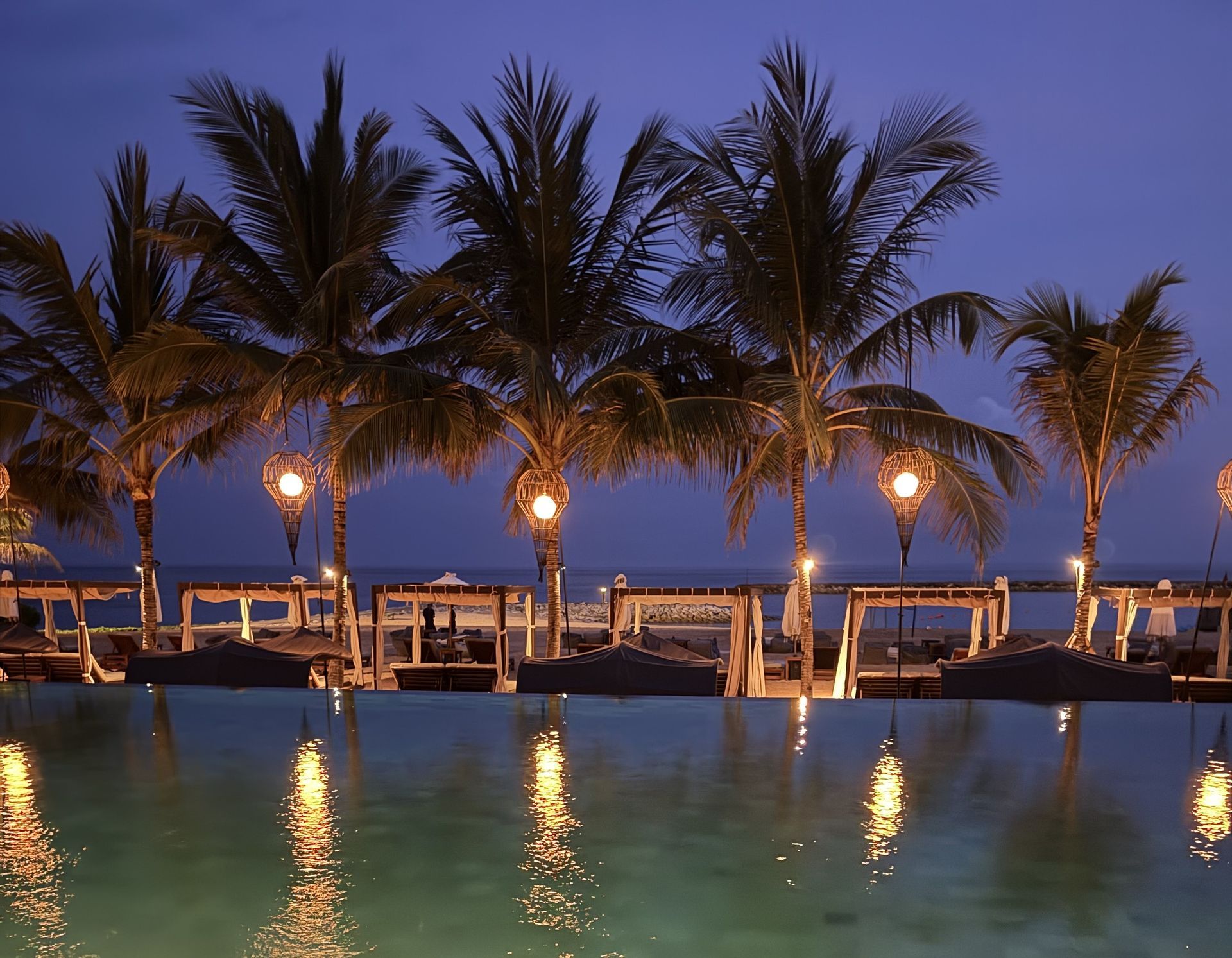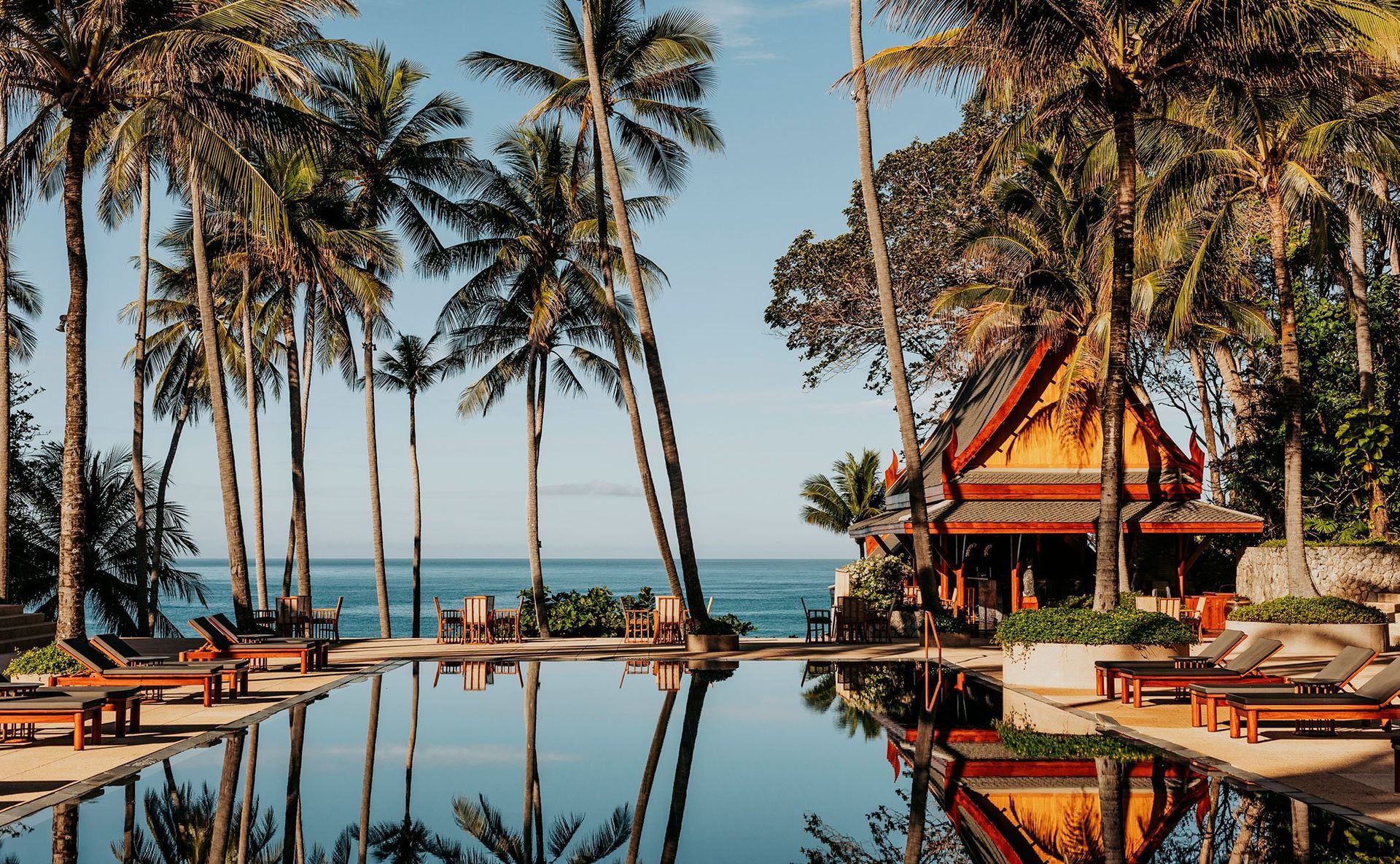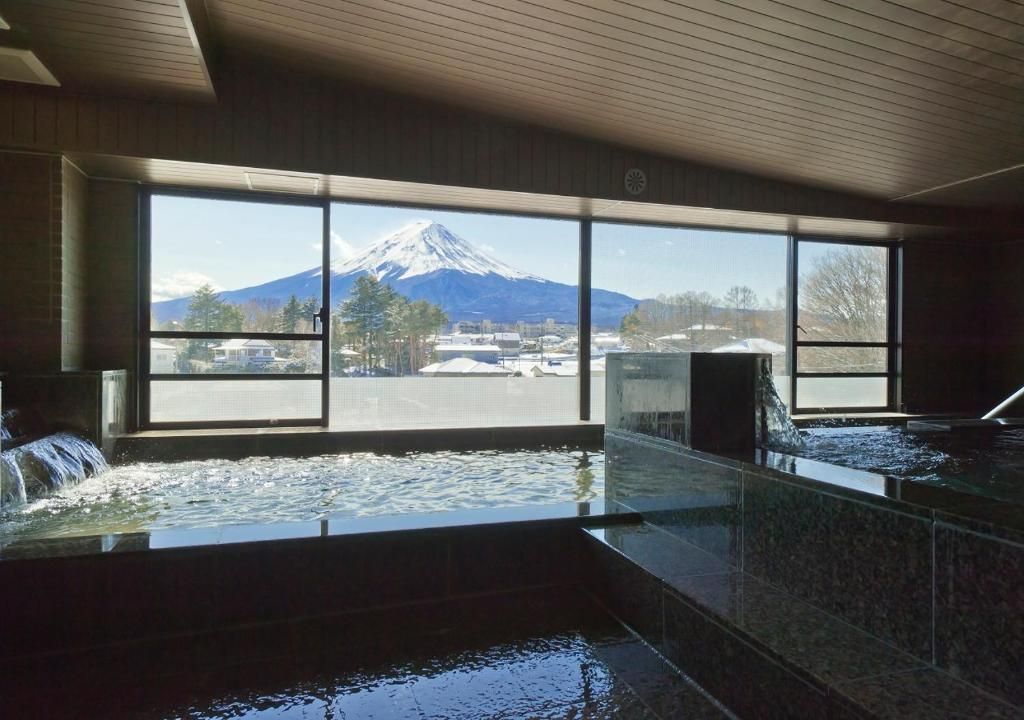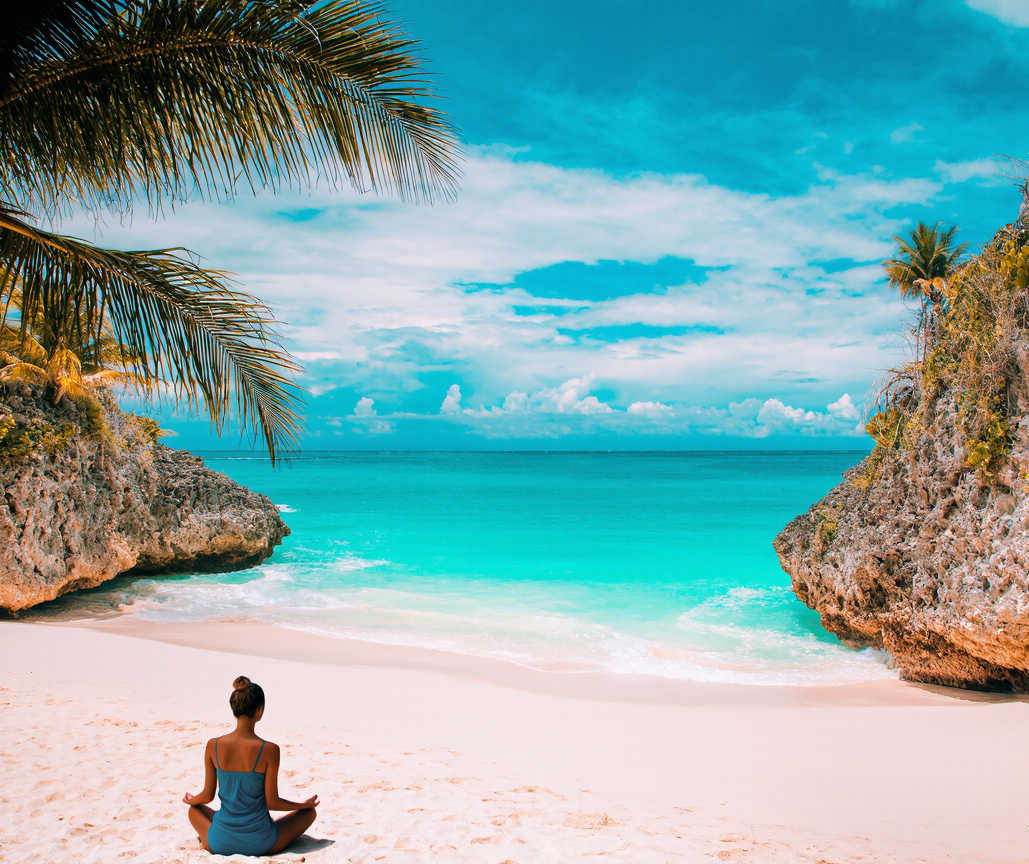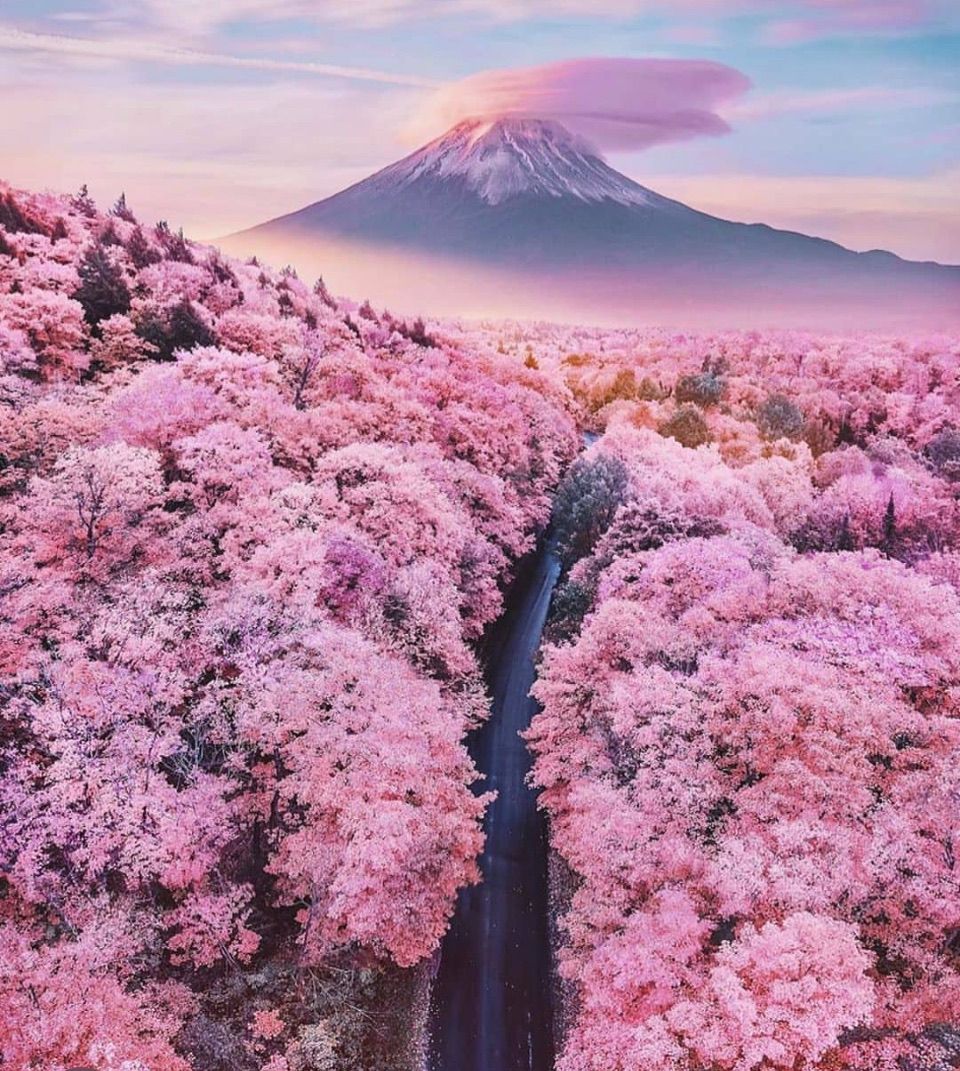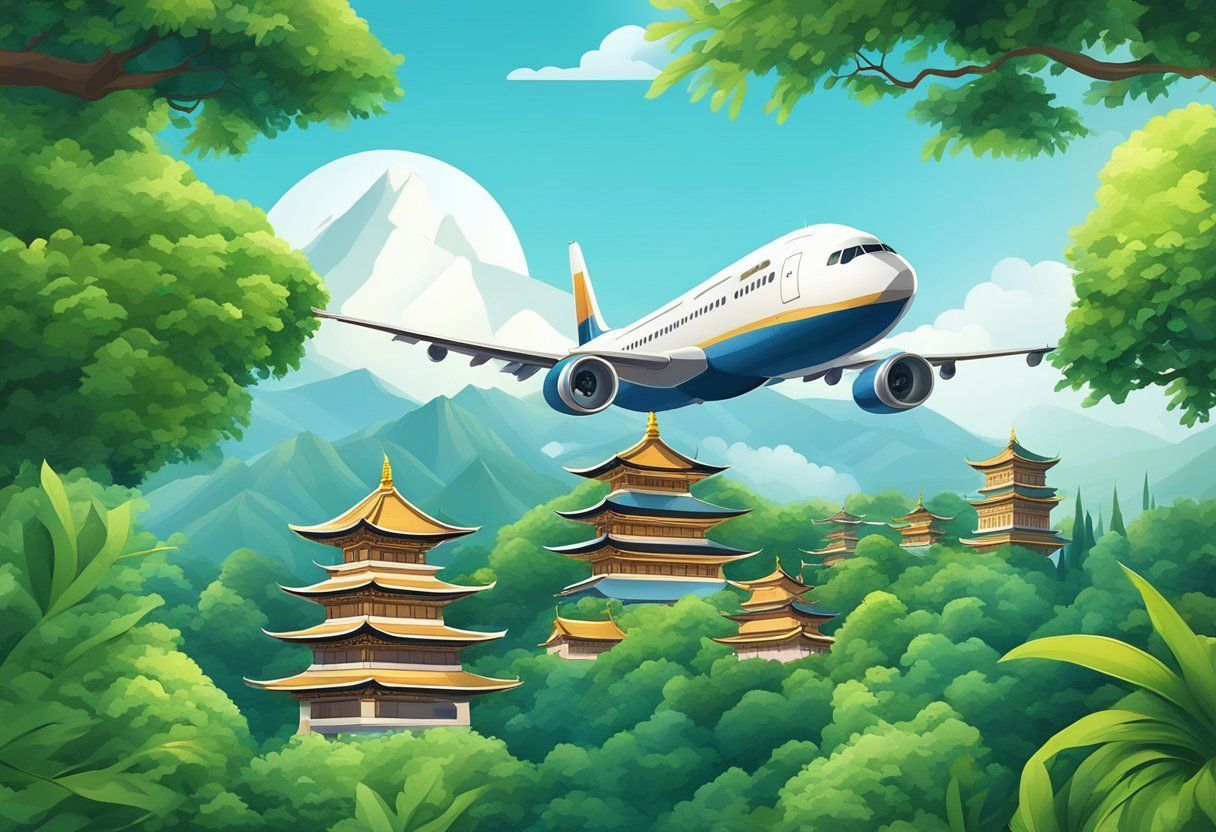Asia Awaits
Nestled within the vibrant landscapes of Thailand are temples that exude tranquility and spiritual depth. These sanctuaries not only showcase stunning architecture but also provide a window into the rich cultural tapestry of the region.
Exploring these temples offers visitors a unique opportunity to connect with Thailand's historical and spiritual heritage.

From the bustling streets of Bangkok to the serene countryside, each temple tells its own story, often tied to ancient traditions and beliefs. Travelers seeking solace can find respite in these sacred spaces, where the air is infused with a sense of peace. The beauty of these sites lies not only in their design but also in the profound experiences they offer.
As the sun sets, casting a golden hue over these awe-inspiring structures, the allure of Thailand's temples becomes even more captivating. They invite exploration and reflection, leaving a lasting impression on all who visit. The journey through these enchanting temples promises to be one of discovery and serenity.
Historical Significance

The historical significance of Thailand's temples reflects a rich tapestry of cultural, political, and spiritual evolution. Their origins, the influence of various kingdoms, and the transformation of religious practices are pivotal to understanding their enduring importance.
Origins and Evolution
The origins of Thailand's temples date back to ancient civilizations, where they served as focal points for spiritual and community life. Initially influenced by Indian culture, these early religious sites merged local beliefs with imported Hindu and Buddhist ideas.
As early as the 5th century, structures began to take shape, often characterized by intricate carvings and reflective architecture. Over the centuries, adaptations occurred to incorporate local materials and design principles. This evolution continues today, showcasing a blend of traditional and modern influences.
Kingdoms and Dynasties
Thailand's history is marked by powerful kingdoms that shaped its religious architecture. The Sukhothai period (1238-1438) saw the establishment of iconic temples like Wat Si Chum, which display early Thai artistry. This era emphasized the relationship between the monarchy and Buddhism, leading to the construction of grand temples as symbols of power.
Following Sukhothai, the Ayutthaya Kingdom (1351-1767) further expanded temple architecture. Temples like Wat Chaiwatthanaram illustrate the blend of Khmer and Thai styles. The influence of these dynasties is evident in the grandiosity of temple complexes, which reflect each kingdom's values and aspirations.
Religious Transformations
Religious transformations play a crucial role in the significance of Thailand's temples. Originally influenced by Hinduism, Buddhism eventually dominated as the state religion. The arrival of Theravada Buddhism markedly changed temple architecture and function, emphasizing the importance of relics and monastic living.
Temples became centers for teaching, community gatherings, and cultural preservation. Festivals and practices surrounding these sites evolved to reflect societal changes, integrating local traditions with Buddhist teachings. This dynamic relationship continues to shape the religious landscape, making temples vital in both historical and contemporary contexts.
Architectural Marvels

Thailand's temples showcase extraordinary architectural designs that blend spirituality with cultural symbolism. The intricacies of their construction reflect not only the artistic skills of their creators but also the deep religious significance embedded in each structure.
Design and Construction
The design of Thai temples, known as "Wats," features a unique combination of traditional Thai elements and influences from other architectural styles. The use of ornate roofs with curved eaves, vibrant colors, and intricate carvings are hallmarks of this design.
Constructed primarily from locally sourced materials such as wood and stone, many temples also incorporate imported elements, showcasing trade influences. The meticulous attention to detail during construction is evident in every aspect, from the layout of the temple grounds to the decorative motifs that narrate religious stories.
Iconic Temples and Their Features
Several temples stand out as iconic representations of Thai architecture.
1. Wat Phra Kaew: Esteemed as the Temple of the Emerald Buddha, it resides within the Grand Palace. The temple features exquisite gilded structures and beautifully decorated walls, highlighted by the revered statue of the Emerald Buddha.
2. Wat Benchamabophit: Also known as the Marble Temple, it is famous for its stunning blend of Italian Carrara marble and traditional Thai architecture. Its serene atmosphere and meticulous gardens enhance its beauty.
3. Wat Doi Suthep: Perched on a mountain, this temple provides breathtaking views and is adorned with intricate mosaics and golden stupas.
Symbolism in Structures
The architecture of Thai temples is rich in symbolism, reflecting various aspects of Buddhist teachings.
Stupas, representing the sacred mountains, symbolize enlightenment and the path to spiritual fulfillment.
Deities and mythical creatures, often depicted in carvings, serve as protection and guidance for visitors.
Color usage also carries meaning; for example, gold signifies purity and the divine, while vivid reds and greens represent prosperity and growth.
Together, these elements create a spiritual narrative deeply embedded in the temple's layout and aesthetics.
Spiritual Practices
Thailand's temples are not just architectural wonders; they are centers of spiritual life. Visitors can engage in various practices that reflect the rich traditions of Buddhism and the serene atmosphere of these sacred sites.
Sacred Ceremonies
Sacred ceremonies in Thailand's temples chronicle important religious events. These rituals often include offerings, chants, and processions that connect participants to their spiritual heritage.
At significant times, such as Buddhist holidays, temples hold elaborate ceremonies. Key observances include Buddha Day and Makhabucha, each marked by special prayers and communal activities.
Monks play a vital role in these ceremonies, guiding worshippers through rituals that promote mindfulness and reflection. Devotees offer flowers, incense, and food, symbolizing respect and gratitude.
Participation in these ceremonies can have a profound effect, allowing individuals to experience community and spiritual fulfillment.
Pilgrimage and Worship
Pilgrimage to temples is a cornerstone of Thailand's spiritual practice. Many Buddhists undertake journeys to sacred sites, believing that these experiences facilitate spiritual growth.
One of the most revered pilgrimage sites is Wat Phra That Doi Suthep in Chiang Mai. This temple not only offers breathtaking views but also connects pilgrims to centuries of tradition.
Worshippers often perform prostrations and chants, seeking blessings and insights from the Buddha. This practice fosters a deep sense of connection to their faith and the universe.
Many temples also offer special rituals for visitors, making it possible for them to partake in worship alongside locals. Engaging in this practice aligns them with the spiritual essence of the place.
Meditation Retreats
Meditation retreats attract individuals seeking solace and healing within Thailand's tranquil temples. These retreats provide structured environments for meditation and self-discovery.
Typically lasting several days, retreats immerse participants in daily meditation sessions, teachings, and mindfulness practices. One notable retreat location is Wat Suan Mokkh, known for its serene grounds and supportive atmosphere.
Participants learn various meditation techniques, including Vipassana and Metta, promoting inner peace and emotional well-being. Silence during retreats allows individuals to reflect inwardly, fostering profound personal insights.
The combination of nature, spirituality, and meditative practice creates a unique opportunity for transformation. This experience is often described as life-changing, enabling attendees to return home with new perspectives and tranquility.
Cultural Impact
The temples of Thailand serve as vital cultural hubs that influence literature, social practices, and communal celebrations. Their presence permeates various aspects of daily life, embedding Buddhist teachings and traditions within the fabric of Thai society.
Temples in Thai Literature
Thai literature often reflects the significance of temples, showcasing their role as symbols of spirituality and cultural heritage. Themes of devotion and morality are prevalent in many literary works, where temples serve as settings for profound events in stories.
Prominent authors and poets depict temples as places for introspection and enlightenment. Works such as the Ramayana and local folk tales illustrate how temples are not merely architectural structures but also central to the moral fabric and identity of Thai culture.
Festivals and Celebrations
Festivals surrounding Thai temples are vibrant expressions of faith and community. Major events like Songkran and Loy Krathong highlight the communal spirit, drawing people together to celebrate their beliefs.
During these occasions, temples play host to religious ceremonies, cultural performances, and community gatherings. Activities such as water pouring on Buddha statues during Songkran symbolize purification and renewal, while the floating of krathongs during Loy Krathong signifies gratitude and respect for water resources.
Community and Daily Life
Temples are essential to community life in Thailand, serving as centers for education, social services, and spiritual guidance. They often host classes on Buddhism, meditation, and artistic expressions.
Regular activities at temples foster social bonds among community members, with people gathering for chanting sessions, meditation, and community outreach programs. The temple's role extends beyond the spiritual, becoming a sanctuary for support and collective identity within the community.
Preservation Efforts
Preserving Thailand's temples is crucial for maintaining cultural heritage and spiritual identity. Various initiatives focus on restoration, addressing challenges, and garnering international support for these sacred sites.
Restoration Projects
Numerous restoration projects aim to protect and rejuvenate Thailand's temples. Organizations collaborate with local artisans and architects to restore structural integrity while respecting traditional designs.
Notable projects include the restoration of Wat Phra Chetuphon in Bangkok and the conservation of the ancient murals at Wat Phra Kaew. Such efforts restore artwork and architecture that showcase Thailand's rich history.
Funding often comes from government grants and donations from private individuals or organizations passionate about preserving cultural landmarks. Involving local communities in restoration fosters a sense of ownership and respect for these sacred sites.
Conservation Challenges
Despite ongoing efforts, significant challenges hinder temple preservation. Environmental factors like pollution and climate change threaten the structural integrity of temples.
Additionally, urban development poses risks, as rising infrastructure often encroaches upon historically important sites.
Limited funding or resources can also be obstacles in maintaining these temples, leading to deterioration over time. Education and awareness are vital to address these issues and encourage community engagement in preservation efforts.
International Support and Recognition
International recognition enhances preservation efforts for Thailand's temples. Global organizations, including UNESCO, contribute resources and expertise to safeguard these cultural landmarks.
Programs focus on travel sustainability, promoting responsible tourism that benefits local communities while preserving their heritage.
International collaboration has raised awareness about the significance of preserving temples as part of global cultural heritage. Engaging tourists in preservation activities can also prove beneficial, creating a connection between visitors and Thailand's rich spiritual landscape.
Exploring Temples Today
Visiting temples in Thailand today involves understanding their significance and appreciating the cultural practices that accompany them. This section covers important aspects of tourism, visitor experiences, and lesser-known sites that enrich the journey.
Tourism and Etiquette
Travelers should be aware of the etiquette required when visiting Thai temples. Proper dress is essential; visitors must wear clothing that covers shoulders and knees. Many temples provide sarongs for those who do not meet these requirements.
Photographs are often allowed, but some areas may prohibit photography, especially in sacred spaces. Visitors should also maintain a respectful demeanor, speaking softly and refraining from touching sacred objects.
Additionally, removing shoes before entering temple buildings is customary. This practice reflects respect for the sacred space and helps maintain cleanliness.
Visitor Experiences
Each temple offers unique experiences that resonate differently with visitors. Major temples like Wat Phra Kaew and Wat Pho attract crowds, where visitors can admire stunning architecture and intricate details. The Emerald Buddha draws many, with its calm presence inspiring reflection.
In contrast, temples that are less frequented, like Wat Phra That Doi Suthep, provide a more intimate experience. Here, travelers can enjoy tranquility and spiritual connection away from busy tourist paths.
Guided tours can enhance understanding, but travelers may also choose to explore solo, allowing for personal reflections amid peaceful surroundings.
Off the Beaten Path
Numerous hidden gems exist beyond the popular tourist circuits. Temples in Thailand’s tranquil provinces showcase stunning architecture and rich cultural heritage. For example, Wat Pha Sattakhan in Loei offers a serene atmosphere surrounded by picturesque landscapes.
These lesser-known temples often provide opportunities for mindfulness and personal growth. The natural beauty and spiritual teachings foster introspection amidst the stunning scenery.
Travelers seeking a deeper connection to Thai culture and spirituality will find these hidden treasures incredibly rewarding. Each temple tells a story, inviting visitors to appreciate the magic that lies beyond typical tourist experiences.
Conclusion
Exploring Thailand's temples reveals a spectrum of spirituality and cultural richness. Each temple offers visitors a unique glimpse into the country's religious practices and artistic expressions.
Visitors encounter stunning architecture, from the ornate Wat Phra Kaew, renowned for its beauty, to serene lesser-known temples tucked away in tranquil regions. Each location contributes to a deeper understanding of Thai heritage.
The experience often includes:
- Rich History: Many temples date back centuries, reflecting the evolution of Thai society.
- Cultural Significance: Temples are not only places of worship but also centers for community gatherings and festivals.
- Artistic Expression: Intricate murals and sculptures portray Buddhist teachings and Thai folklore, making each visit culturally enriching.
Travelers often leave these sacred sites with a sense of peace and reflection. The blend of spirituality and artistry promotes a profound connection to Thailand's diverse cultural landscape.
In summary, exploring Thailand's enchanting temples offers not just a gaze into architectural brilliance but also an invitation to experience tranquility and personal reflection. The journey through these spiritual spaces enriches the traveler’s understanding of Thailand's heritage.
Frequently Asked Questions
This section addresses common inquiries regarding visits to Thailand's sacred temples. Important details about visiting hours, prioritizing locations, dress codes, entrance fees, cultural significance, and expected rituals are highlighted for a better understanding of the temple experience.
What are the visiting hours for the most revered temples in Thailand?
Visiting hours vary among temples. Typically, major temples like Wat Phra Kaew and Wat Arun open daily from 8:30 AM to 5:00 PM. It is advisable to check specific times ahead of a visit, as some locations may have extended hours or seasonal variations.
Which temples in Bangkok should be prioritized by first-time visitors?
First-time visitors to Bangkok should prioritize Wat Phra Kaew, Wat Arun, and Wat Saket. These temples showcase distinct architecture and offer insights into Thailand's rich history and culture. Each temple presents unique experiences that highlight Thai heritage.
Can you list the appropriate attire when visiting Thai temples?
Visitors are expected to wear respectful attire at Thai temples. This includes long pants or skirts and shirts with sleeves. It is generally prohibited to wear flip-flops and revealing clothing. Modesty is a key cultural aspect when entering sacred sites.
What are the entrance fees for the major temples in Bangkok?
Entrance fees vary for different temples. Wat Phra Kaew charges around 500 THB, while Wat Arun has an entry fee of approximately 100 THB. Prices can change, so confirming current rates before visiting is advisable.
What is the significance of Wat Phra Kaew in Thai culture?
Wat Phra Kaew, home to the revered Emerald Buddha, is considered the most sacred temple in Thailand. It symbolizes the unity of the Thai people and the country’s spiritual essence. The temple complex is a central part of Thailand's historical and cultural identity.
Are there any cultural practices or rituals tourists should be aware of when visiting sacred temples in Thailand?
Visitors should observe various cultural practices, such as removing shoes before entering temple buildings and maintaining a respectful demeanor. Photographs may be restricted in certain areas. Understanding the importance of these rituals enhances the experience and shows respect for local customs.
